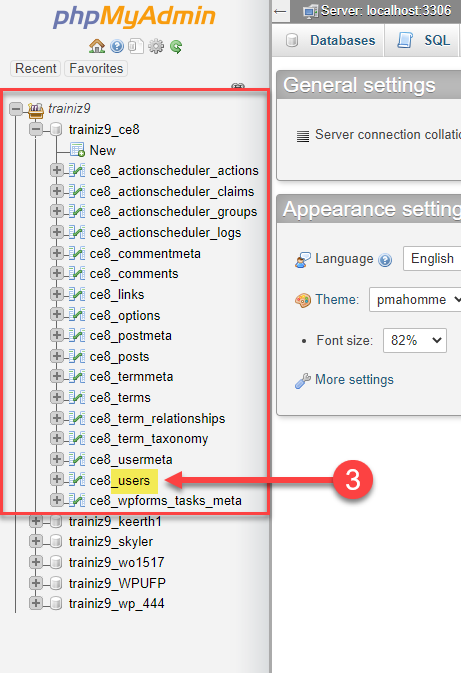

- #Change phpmyadmin password password
- #Change phpmyadmin password download
Copy the emergency script from Emergency Password Script and place it into a file called emergency.php in the root of your WordPress installation.
 Removing the script when finished is extremely important for security reasons. The script is to be placed at the root of your WordPress installation. If you do not get the email sent, the password is still changed. The script updates the admin password and sends an email to the admin’s email address. Using this script requires you know the admin username. It is not a plugin but rather a PHP script. If other solutions did not work, then you may wish to try using the Emergency Password Reset Script. Using the Emergency Password Reset Script This way WordPress doesn’t reset the password every single time the admin dashboard is accessed going forward. Now that you’ve successfully reset your password, remove the wp_set_password line from your local functions.php file, and re-upload it. Login to your WordPress dashboard using the new temporary password you just set. Upload this modified functions.php file back to your /themes folder on the server. You’ll also want to make sure that you’re using a secure WordPress password. In this example, we’re setting the password to password, and we’re updating it for the user admin, if your admin user has a different username you’ll want to be sure to use that. On line 2, right after the first
Removing the script when finished is extremely important for security reasons. The script is to be placed at the root of your WordPress installation. If you do not get the email sent, the password is still changed. The script updates the admin password and sends an email to the admin’s email address. Using this script requires you know the admin username. It is not a plugin but rather a PHP script. If other solutions did not work, then you may wish to try using the Emergency Password Reset Script. Using the Emergency Password Reset Script This way WordPress doesn’t reset the password every single time the admin dashboard is accessed going forward. Now that you’ve successfully reset your password, remove the wp_set_password line from your local functions.php file, and re-upload it. Login to your WordPress dashboard using the new temporary password you just set. Upload this modified functions.php file back to your /themes folder on the server. You’ll also want to make sure that you’re using a secure WordPress password. In this example, we’re setting the password to password, and we’re updating it for the user admin, if your admin user has a different username you’ll want to be sure to use that. On line 2, right after the first 
In my case this was /home/userna5/public_html/wp-content/themes/twentyfourteen/functions.php
#Change phpmyadmin password download
Login to your website via FTP and navigate to your theme’s functions.php file and download it to your local computer.If you don’t have access to your WordPress database, you can also reset you password with FTP. You should now see a success message from phpMyAdmin saying the database record was updated.In the user_pass field, paste your password by pressing Ctrl – V.From the drop-down, select MD5.Finally click on Go.Click on Edit beside your WordPress admin user.Click on the name of your WordPress database.Under the Databases section, click on phpMyAdmin.It’s also recommended that you always backup your database in cPanel prior to making any database modifications directly. You should only use this method if you’re comfortable with working with databases in this fashion. You can directly change your WordPress password in the database using phpMyAdmin if you forgot it.







 0 kommentar(er)
0 kommentar(er)
